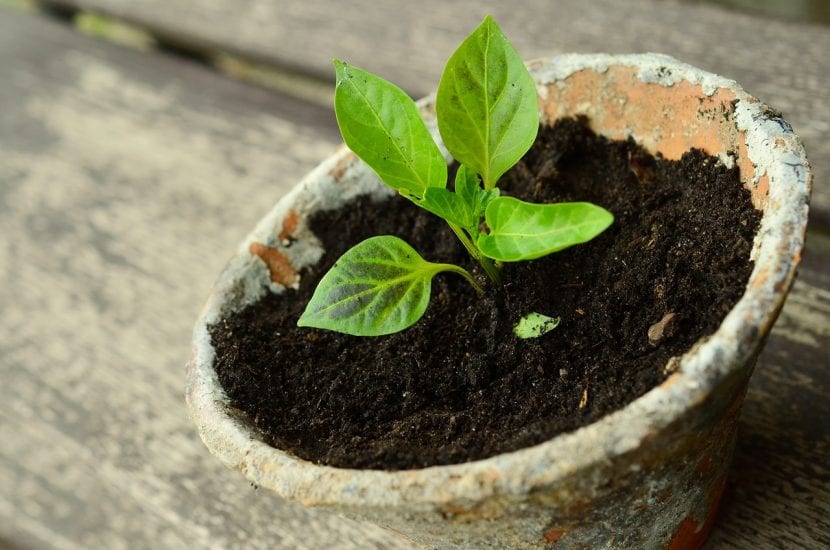
Plants can be classified in several different ways: by the type of flower, by the size they reach once adult, by the shape of their leaves ... But, in botany, there is a classification that is widely used and is to differentiate plants Come in monocots and dicots.
What do these two words mean? How are they different from each other?
Monocotyledonous plants

Monocots are flowering plants (angiosperms) that are characterized by having a single cotyledon, that is, only a single primitive leaf emerges when germinating, instead of two. But the interesting thing does not end here, but this difference goes beyond how many leaves sprout when the seed germinates. In fact, their growth is very different from that of dicots. I explain why:
These types of plants do not have a true secondary growth, that is, they do not have a true trunk, and if you cut it, you do not see the annual rings that you would see in trees or shrubs. Why? Because they do not have cambium, which is a meristematic plant tissue located between the bark and the log, made up of a layer of embryonic cells. Without it, monocots cannot produce wood, so the increase in height occurs in a different way: widening the internodes as it grows.
Another interesting feature is its estate, which are adventitious, that is, they all come out of the same stem base. Thus, its root system is short, it does not go deeper than 5-60cm depending on the plant. As a consequence of all this, they cannot have many branches either, as trees that are dicotyledonous do, for example. What's more, the leaves have visible, parallel veins, like those of the grass that forms the lawn.
What types of plants are monocots? It is believed that there are about 50 thousand species, including grasses, palms, bulbous, or orchids. Let's look at some examples:
Phoenix canariensis (Canary Island Palm)
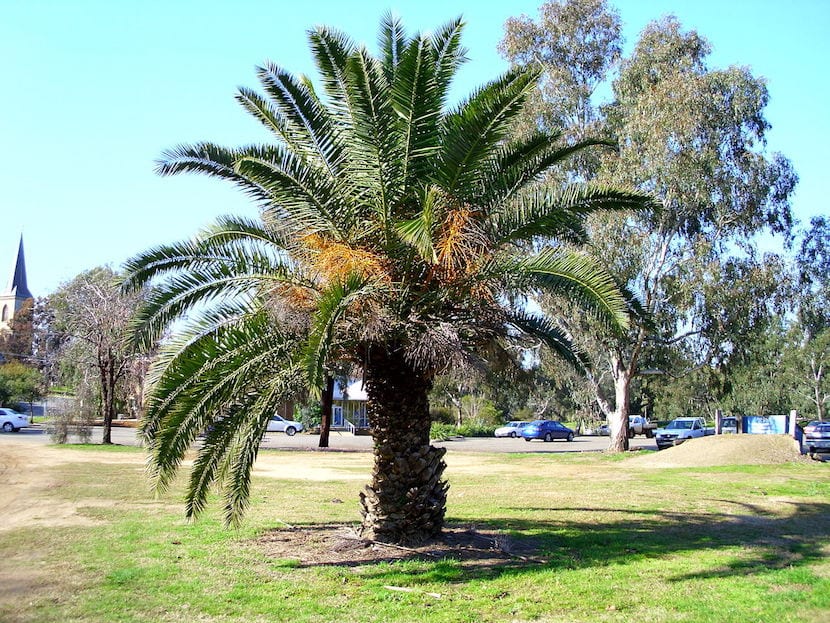
It is a Palm tree endemic to the Canary Islands (Spain). Reaches a height of up to 13 meters, with a crown formed by pinnate and long leaves of up to 7 meters. Its trunk is quite thick, being able to measure 1m in diameter at its base.
It is a wonderful garden plant, since withstands heat and frost down to -7ºC.
Tulipa sp (Tulips)

They are bulbous plants native to the Middle East. It is estimated that there are about 150 species and countless hybrids. Many of them are marketed as ornamental flowers, as their colors are truly wonderful.
To be able to enjoy them to the fullest, they are planted in autumn. Thus, in spring we will have a garden or patio decorated with these elegant flowers.
Musa paradisiaca (banana)
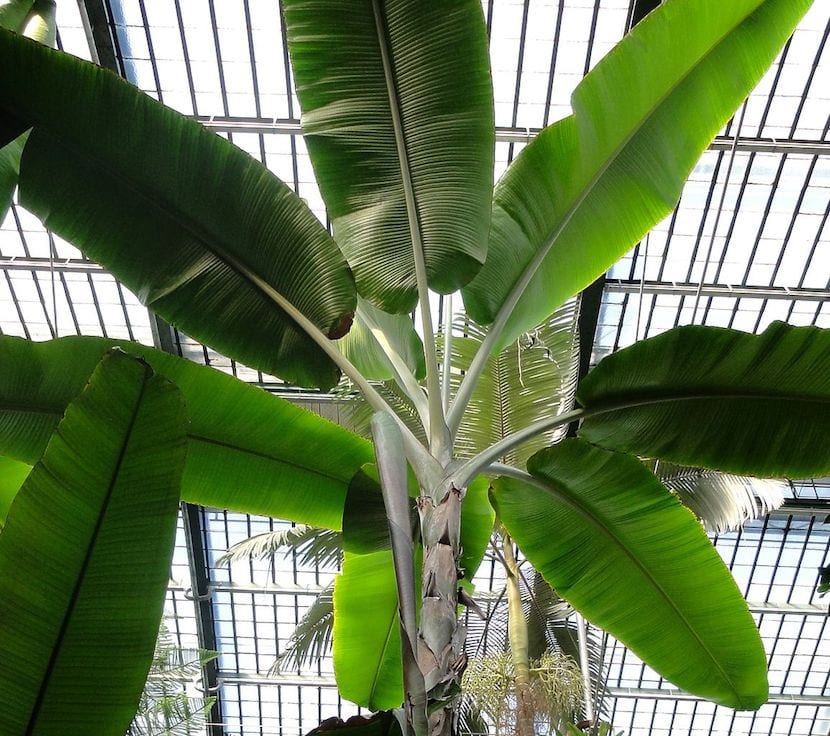
It is a herbaceous plant native to the Indomalaya region. It reaches a height of 4 meters, with long leaves of up to 2m. It produces fruits that are well known to all: the banana, which can measure from 7 to 30cm long and up to 5 in diameter.
It can be had both in soil and in a pot, but it is much more recommended that it be planted directly in the garden so that it can have an optimal development. Resists cold down to -2ºC.
Dicotyledonous plants
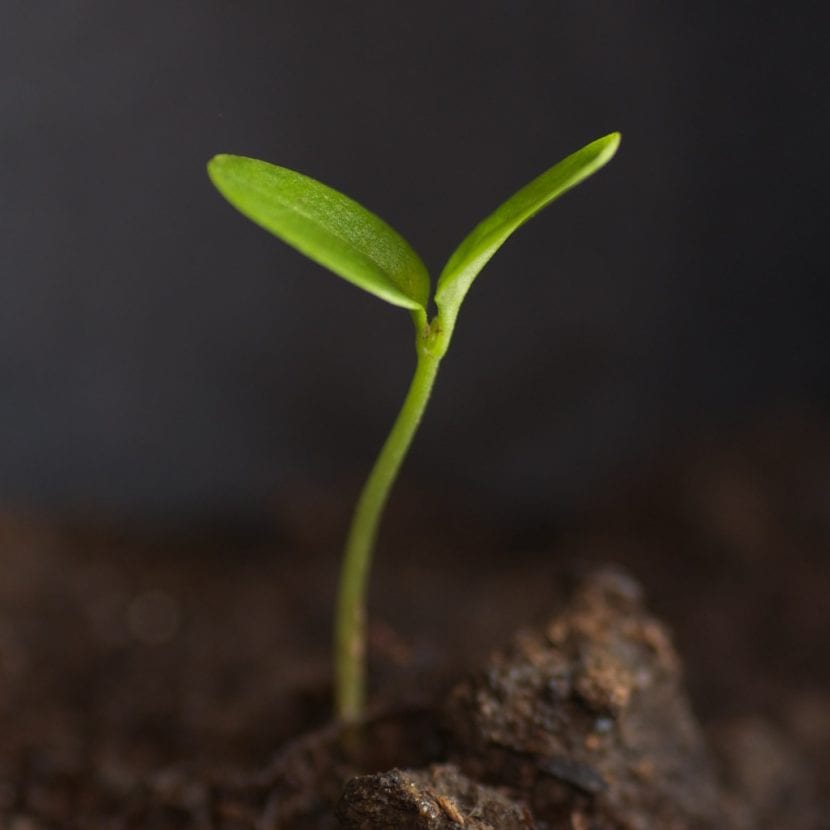
They are the most common group of angiosperms, so much so that there are believed to be about 200.000 species. In them, the embryo that is inside the seed emits two cotyledons when germinating, which are two primitive leaves that will serve as food for the new seedling. Once it grows, its leaves acquire different shapes: heart-shaped, tapered, with a serrated or simple edge ...
Unlike monocots, the root that emerges as soon as it germinates, continues to grow as a primary root. And another important detail: if you cut a branch, you will immediately see the annual rings, formed by the xylem and phloem. These branches, as well as the trunk, can thicken with the formation of firewood or wood.
Within this type of plants, we find Legumes, Rosaceae, Rutaceae, among many others. Some examples are:
Acer sp (Maple)

It is one of the genres of deciduous trees and shrubs most cultivated in all temperate regions of the world. Distributed throughout North America, Europe, Asia and North Africa, there are believed to be 160 species, the best known being the Acer palmatum (japanese maple), The Acer pseudoplatanus (fake banana maple), and the Acer (red maple), among others.
All of them they want mild climates, with summers not too hot (maximums of 30ºC) and cold winters (minimums of -15ºC).
Bouganvillea sp (Bougainvillea)
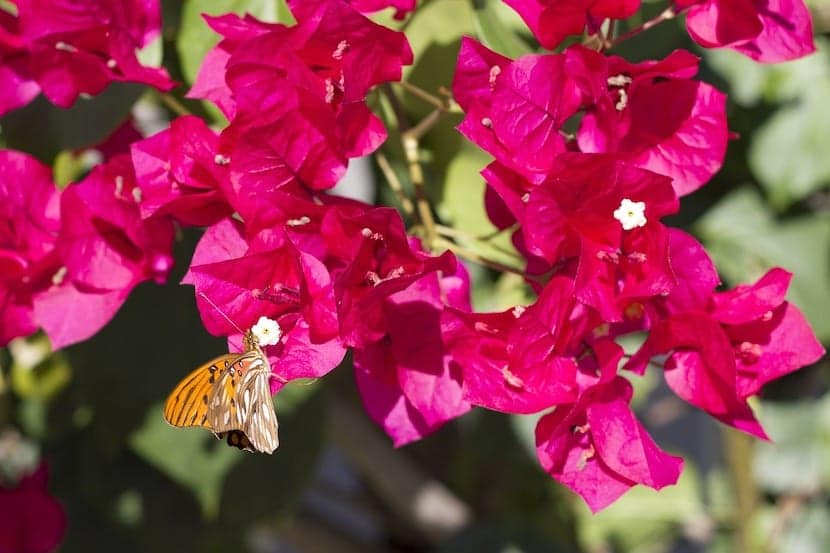
It is a climbing plant native to the tropical regions of South America that can reach heights of up to 12 meters. It does not have tendrils, but its stems are entangled using its sharp thorns. In spring and summer they produce very showy inflorescences, pink, orange or white depending on the variety.
Can be grown outdoors in mild climates, with frosts down to -2ºC.
Rosa sp (Rose bushes)
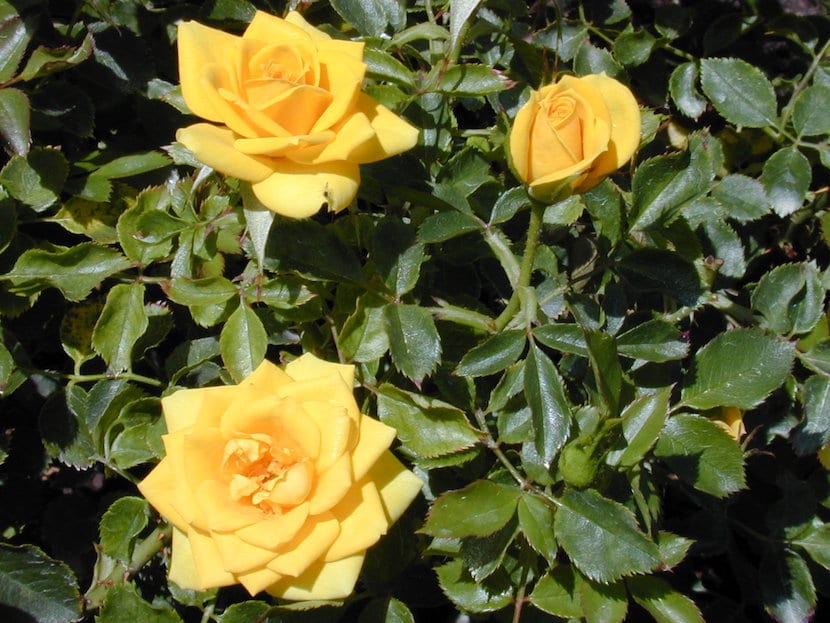
They are one of the most beautiful flowering shrubs that exist. Native to Europe, North America, and northwestern Africa, there are an estimated 100 species and countless cultivars and hybrids. They are very easy plants to care for, they only need frequent waterings, regular pruning (above all, remove the withered flowers), and lots of sun to be precious.
What's more, they resist well cold and frost down to -5ºC.
Have you heard of monocotyledonous and dicotyledonous plants?
Hello Monica or other readers:
I want to get vegetable seeds (not exclusive) but that are neither hybrid nor transgenic.
Thank you
Hi Pancho.
You will find the seeds you are looking for in nurseries or agricultural stores. They are sold in sachets, as organic seeds.
A greeting.
Hello, how are you Monica? I have a question.
What are the plants that emerge from the bone or seed called a small sprout? such as ahuacates, lychees, mangos and walnuts.
Hello Franco.
They are dicotyledonous plants. The two cotyledons, that is, the first two leaves, are the first thing to be seen when the seed germinates. In some species these remain underground and quickly rot when the first true leaves emerge.
A greeting.
Hello Bladimir.
Virtually all flowering plants are dicotyledonous: geraniums, pansies, petunias, hibiscus, ... well, almost any species that has especially striking flowers are.
They are dicotyledonous because when the seed germinates, two cotyledons emerge, known as the first leaves.
A greeting.
Hi Monica, I have a question
Plants that are Monocotyledonous, their seeds do not emerge from the ground, I would like to know why
Hi Jazmin.
Sorry, I didn't understand your question. You mean they don't germinate as well as dicots?
For example, palm trees bear fruit towards summer. If the conditions are suitable, once they fall to the ground they will germinate in a few days (3-7 days).
A greeting.
I find the explanations interesting
to understand what plants are
We are glad that you found it interesting., Miranda